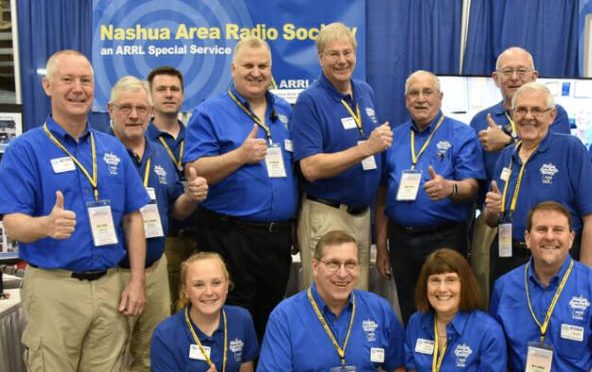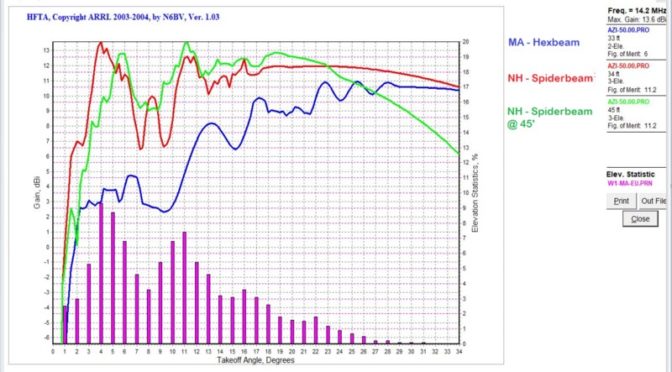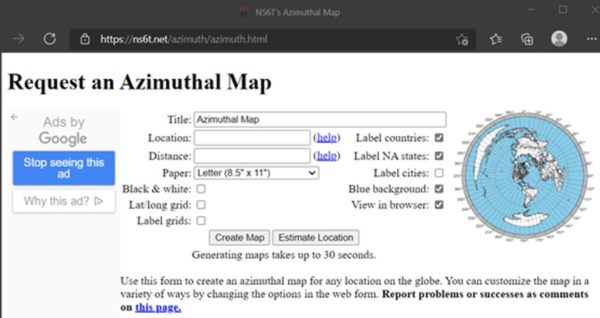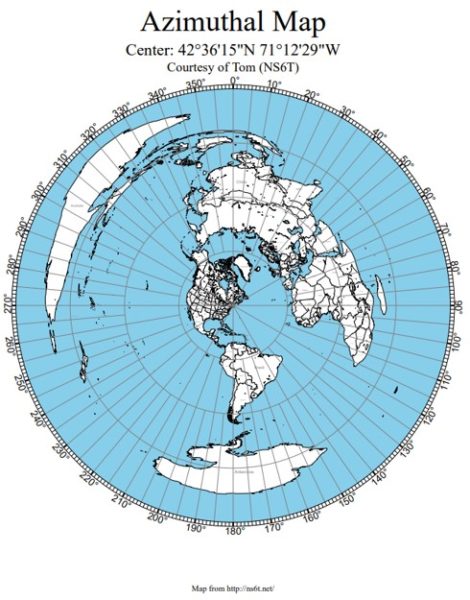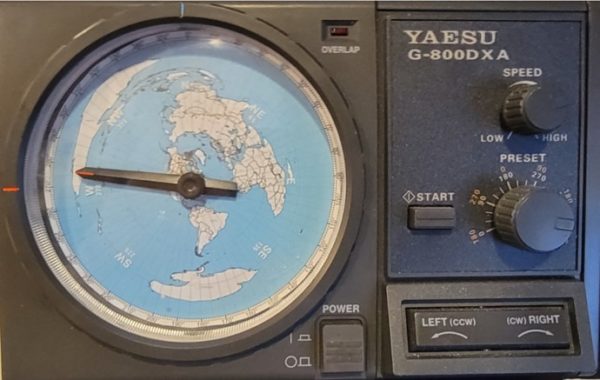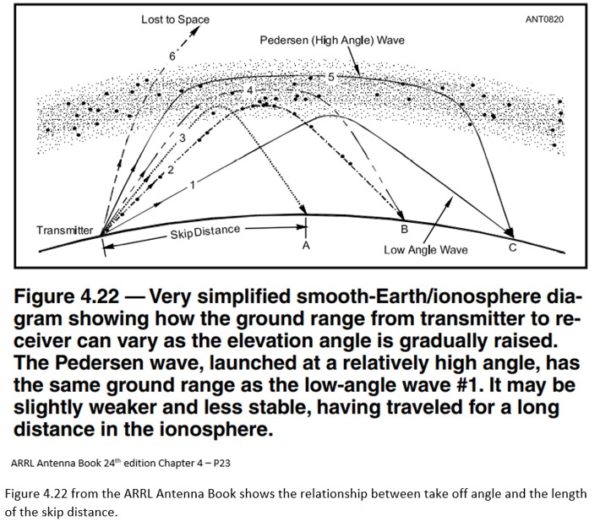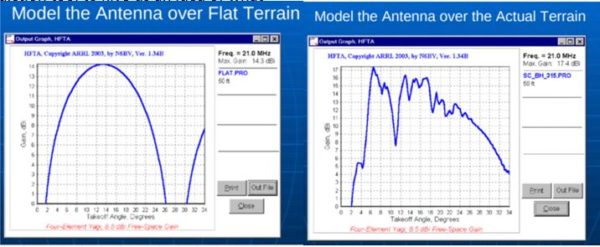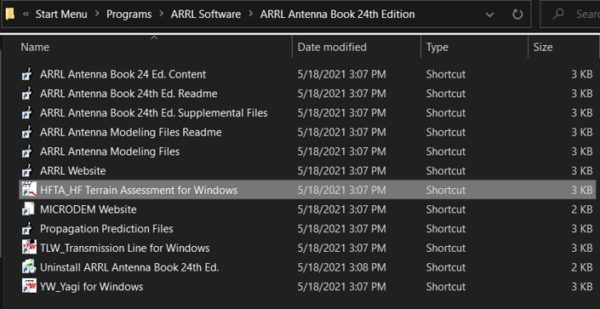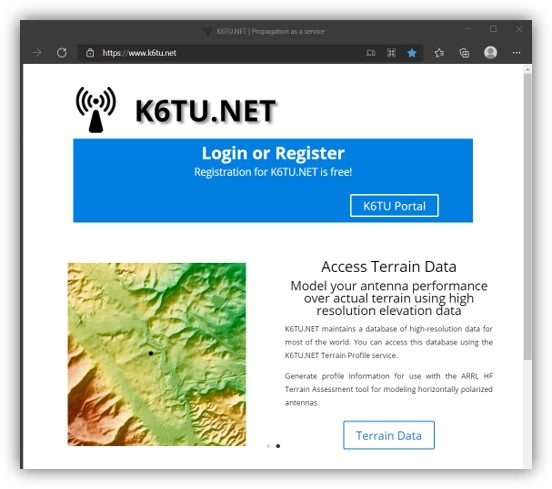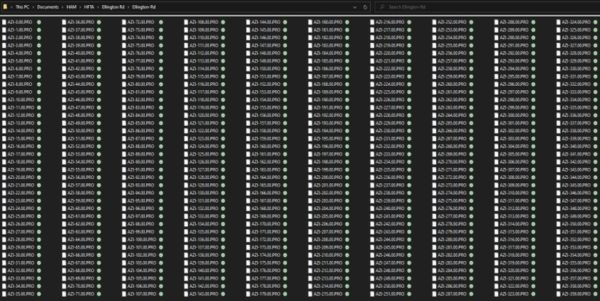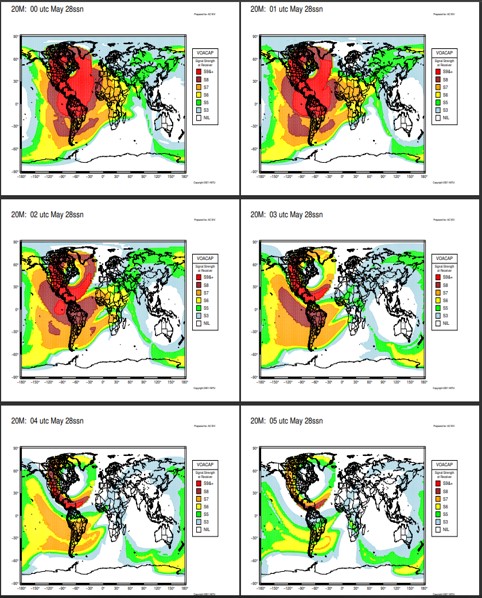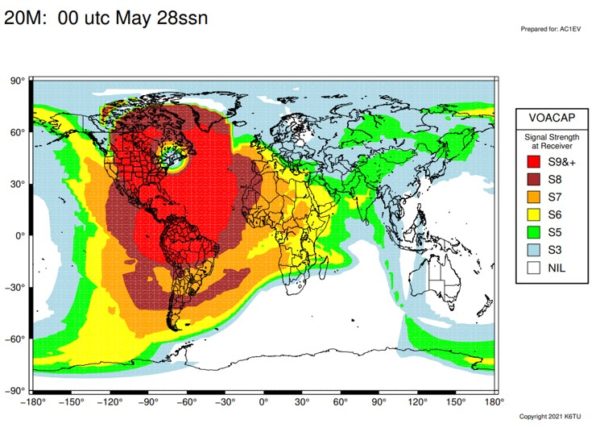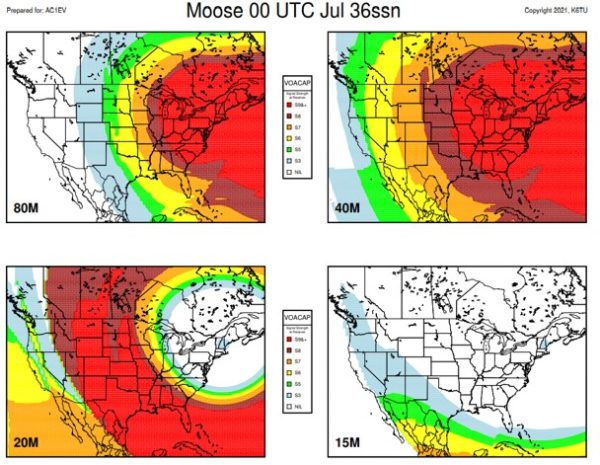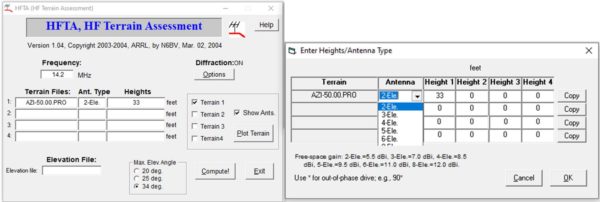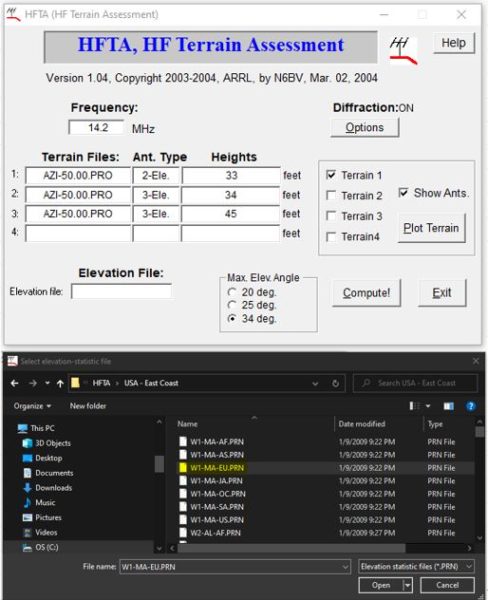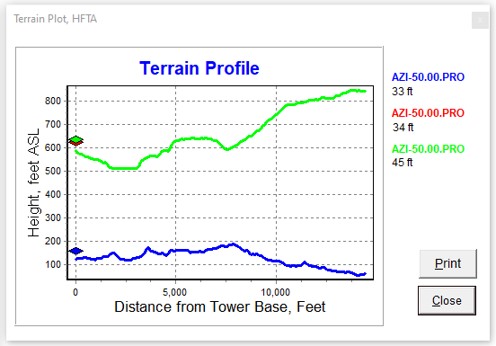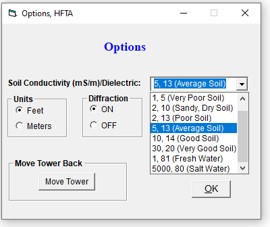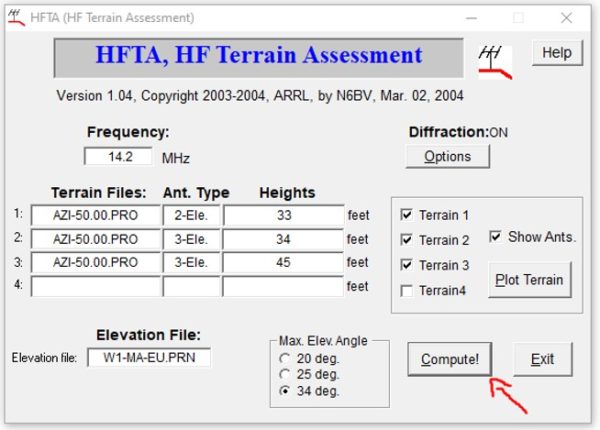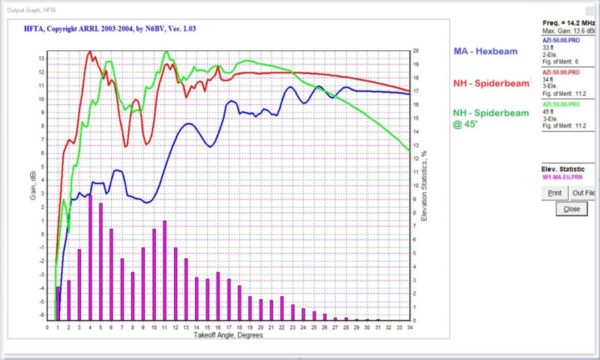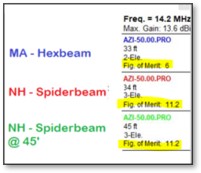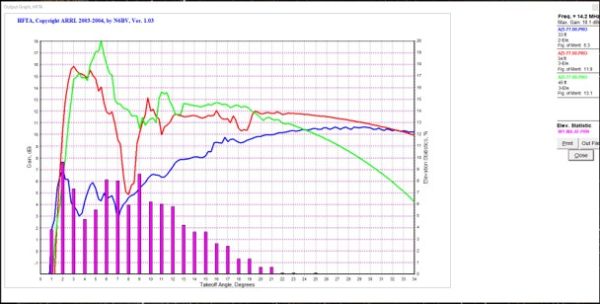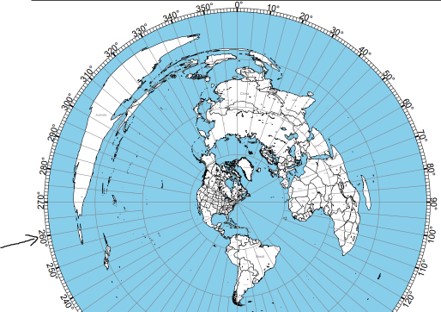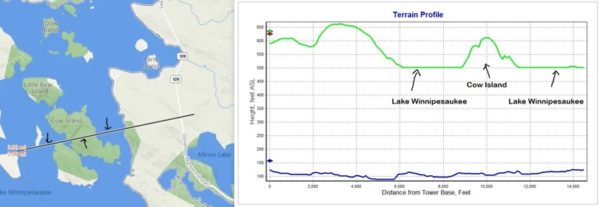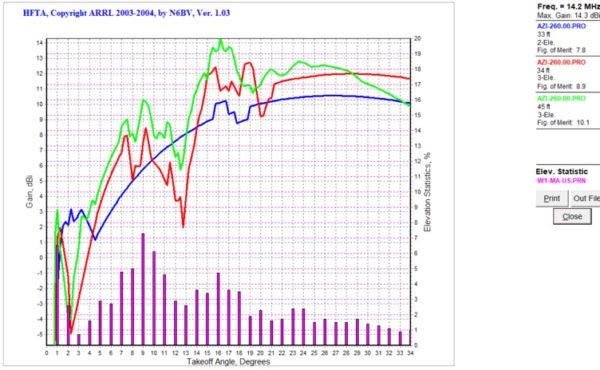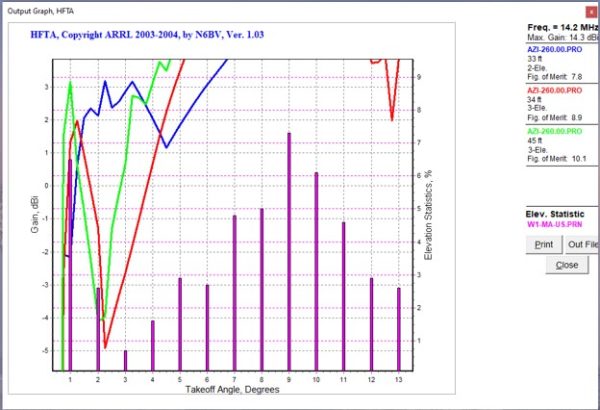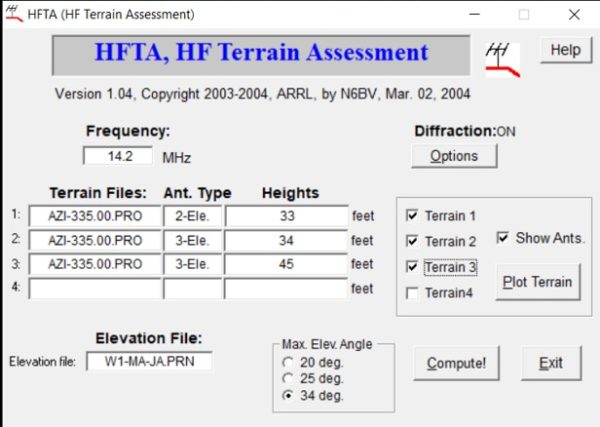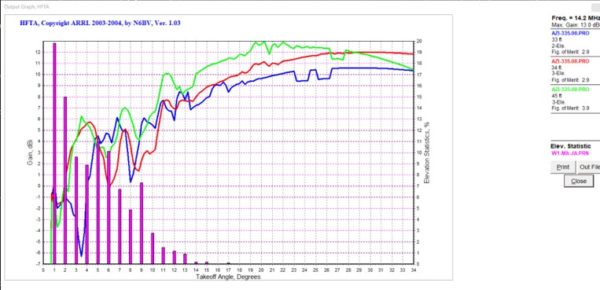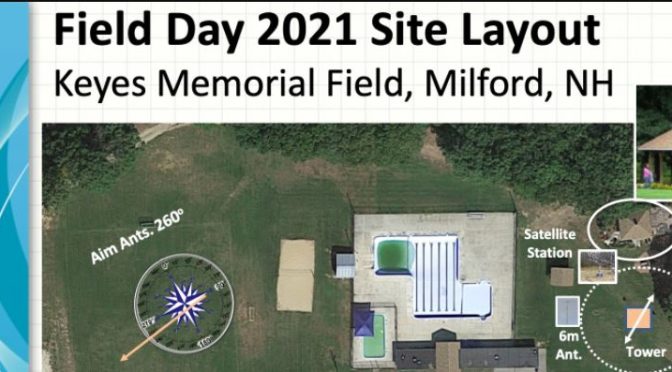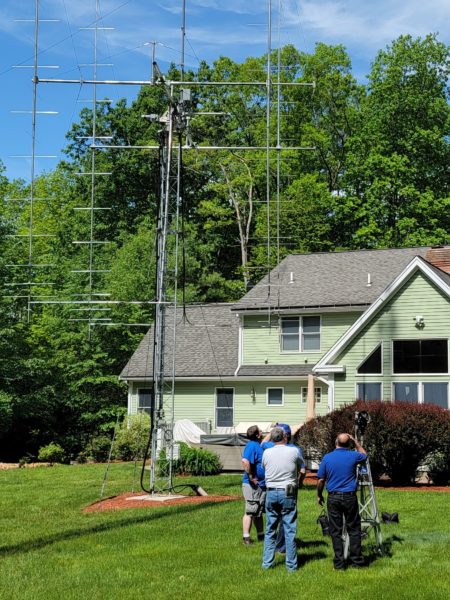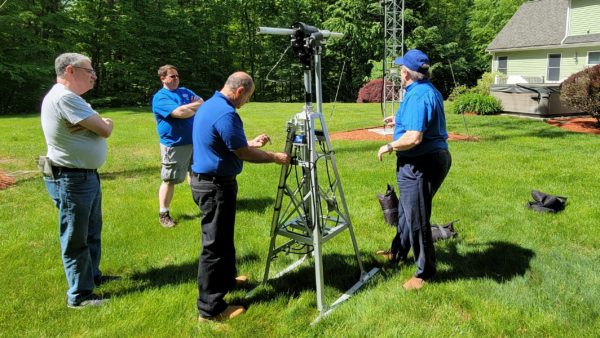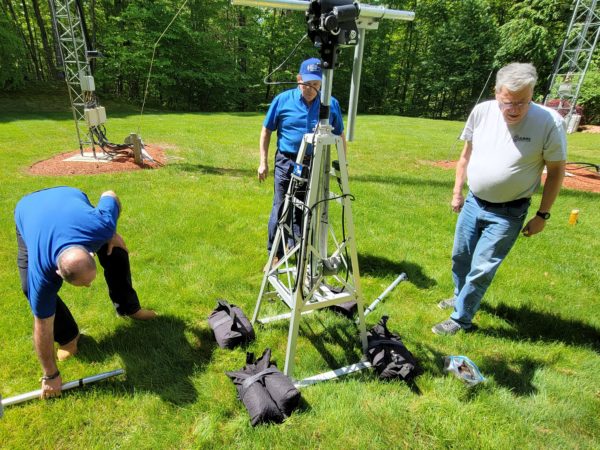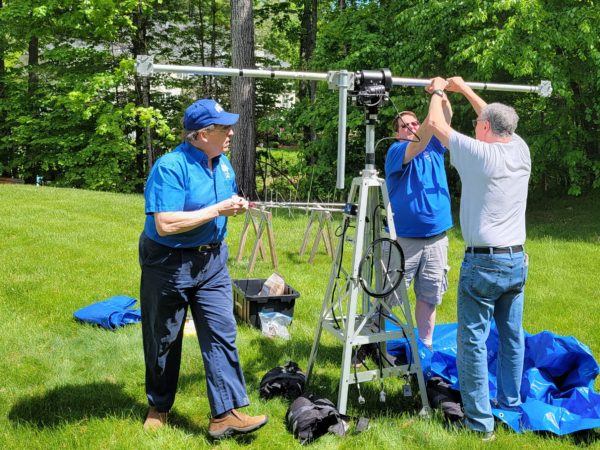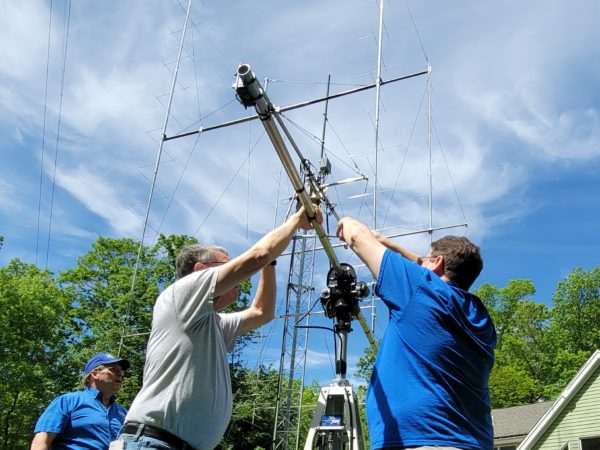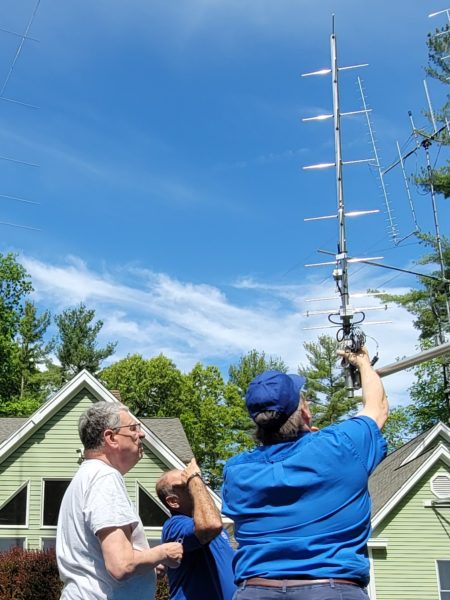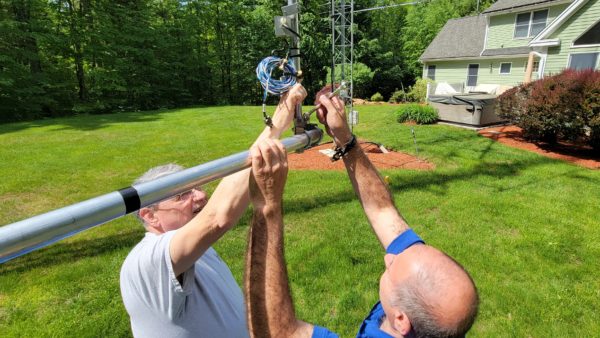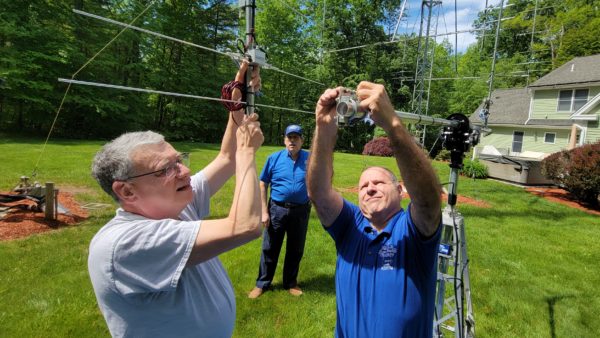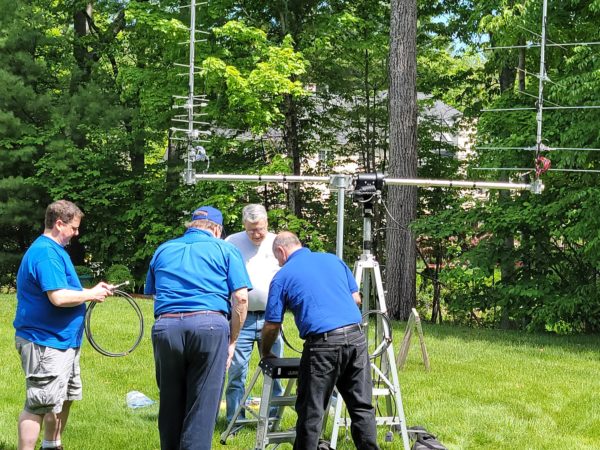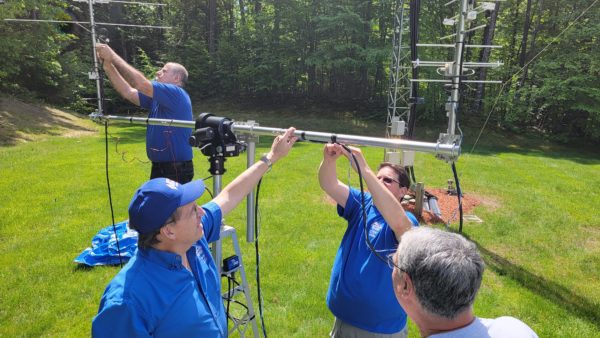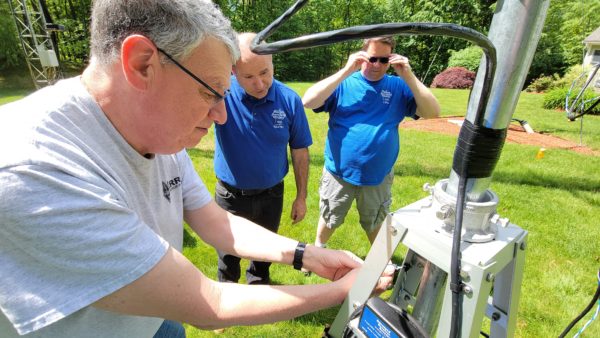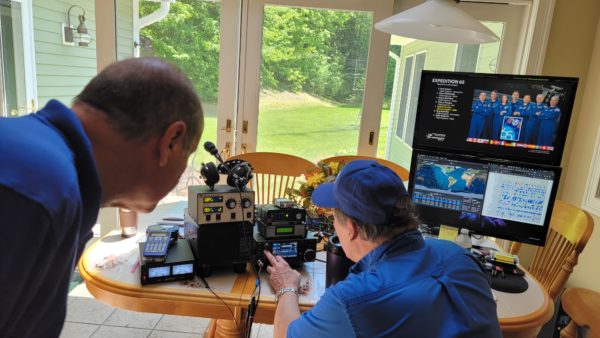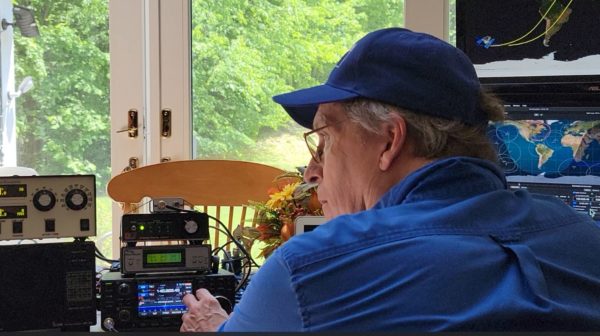Jon Turner (AC1EV) – President
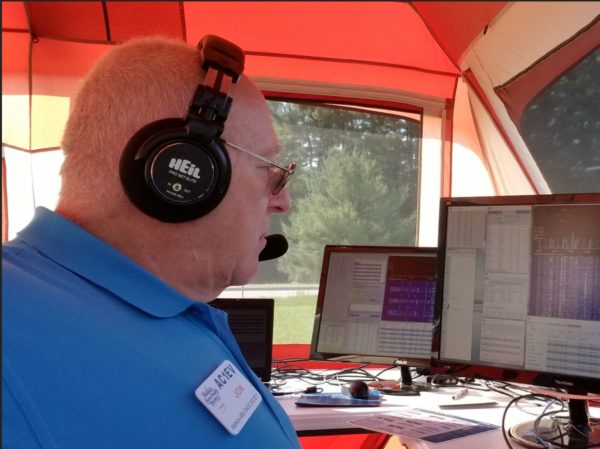
“Here is AC1EV. My name is Jon.” I started saying this back in February of 2018 and have said it almost 11,000 times since then. I self-studied and passed my Technician exam in February 2018 and self-studied and passed my General exam in March 2018. I was in the middle of self-study for my Extra when I had a chance meeting with Charlie, a member of the Nashua Area Radio Society, at HRO in Salem, NH. As we talked and discussed ham radio, I mentioned my study efforts and he said, “My club has a boot camp for Extra next weekend” Well, I knew what I was going to be doing that weekend, so I contacted Anita and joined the class. Friday, Saturday and Sunday and at the end of Sunday I passed the exam and was an Amateur Extra. The club gives a year’s free membership to people who pass their exams with them, and I was so impressed with the whole operation that I joined. I live in Tewksbury, so attending meetings meant a 30-mile ride, each way, but It was completely worth it. Within months I saw the club’s field day operation and was able to operate in 13 Colonies. Both events were very exciting. I quickly saw that NARS had lots to offer new hams and had the philosophy that if you wanted to participate, they would not only let you but would actively assist in helping make it happen.
From that quick start I had a chance to be engaged at all levels with many club activities, write for the newsletter and website and even help Fred with getting students to contact the ISS. A little over two years ago the club secretary moved away from the area and created an opening on the NARS Executive Committee. Fred asked me if I would be interested in the position, and I was. Last year I was elected again as Secretary and have enjoyed working with the leadership team to help make NARS what it is today. This year, with Fred becoming the ARRL New England Division Director, there was an opening on the Executive Committee for President. I think I declined the role 2 or 3 times. Still, I knew that it was an important thing to do and eventually with much discussion with my wife Stephanie, I decided to go for it.
In my time in the club, prior to being elected President, we’ve trained many dozens of new hams, helped more dozens of hams upgrade their licenses, finished with top scores in Field Day, 13 Colonies and other operating activities, and were selected as the Dayton Hamvention 2019 Club of the Year. (Just to name a few) BTW, NARS was on the cover of the ARRL flagship magazine twice in the past year and a half. My immediate goal is to help the club to continue to do those things that made the above possible. Next, I want to become fluent with the club’s operations so I can take advantage of any new opportunities to help grow our membership and help our members grow in the hobby. Above all, I want to keep the spirit of the club that welcomes anyone with interest and desire to participate in any activity at the highest level they can.
I’ve asked each of the EC members to put together a few sentences about themselves to help you get to know them a little better. We have two new members this year and some of us old hands have new roles. Fred becomes our new Programs Chair; Lee is our new Treasurer and Peter is our new Secretary. I moved from Secretary to President. Jamey remains our Vice President, Anita remains the Membership Chair and Jim remains our Activities Chair. Thanks to all the members of the EC for their hard work and support of the club. Here are some of their thoughts.
Jamey Finchum (AC1DC) – Vice President
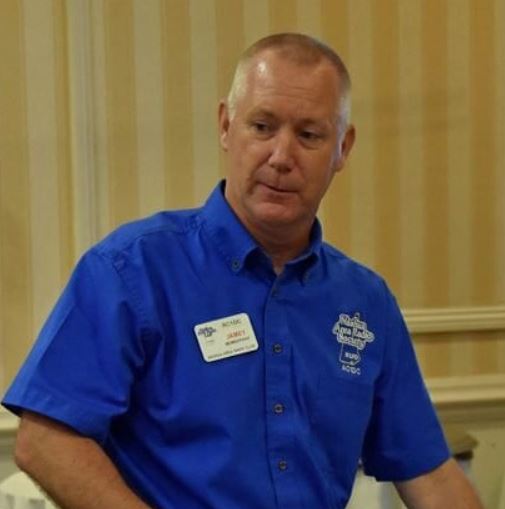
I was first licensed in 2015 through the NARS classes that I found while doing a web search. I wasn’t sure of all that was involved in amateur radio, but really enjoyed the class and was convinced to take the general course the following month. I’m not sure why, but during one of our breaks Fred (AB1OC) had a station set up and we were hearing someone talking from Cuba. It blew me away that we could be hearing someone from as far away as Cuba from a radio set up in a break room attached to an antenna on a truck! I have been hooked ever since!
I enjoy contesting, portable, and mobile operations and I’m always learning something new. I am looking forward to the new year with the club and hopefully having some in-person events with SOTAs, POTAs and other activities.
Lee Duval (KC1GKJ) – Treasurer
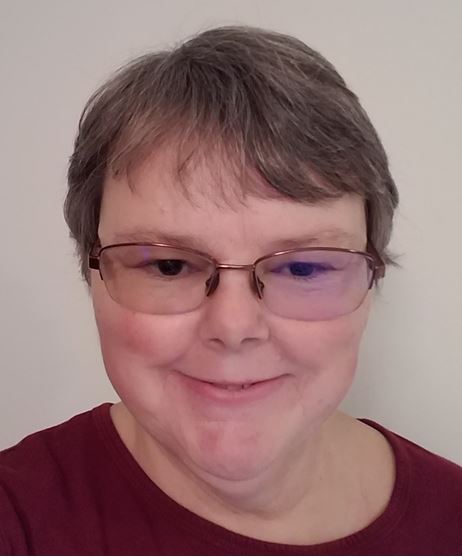
I received my technician license in 2016 through the Nashua Area Radio Society around that time I also became a member of ARES. This spring I started looking through the website for NARS and was impressed by all the training information available and decided to join and go to field day. Field Day was a great experience. Everyone was very welcoming, and I was able to learn all about new things available to amateur ham radios. I was thrilled to participate in K2K and learn about contesting and digital modes and this of course led to my desire to become a General and set up an HF station. After getting advice from some members, I have set up my station with an ICOM 7300 and a Buckmaster dipole. With the help of Fred, I was able to set up my digital side to be able to do FT-8. In December I upgraded to my General and have loved being able to use the extra frequencies and both SSB rag chewing all over the world and making digital contacts in places I have never even heard of!
Talking with Fred and Anita one day we were talking about the treasurer’s position, and I asked him if he knew I was in banking for 14 years? They did not but this let me to becoming the Treasurer. I look forward to being your treasurer. All reports are reviewed and approved by the Executive committee and audited. If anyone has any questions, please feel free to email me at [email protected] along with a phone number and I will be glad to call you back and answer any questions you have.
Peter Wolczko (KC1FNF) – Secretary
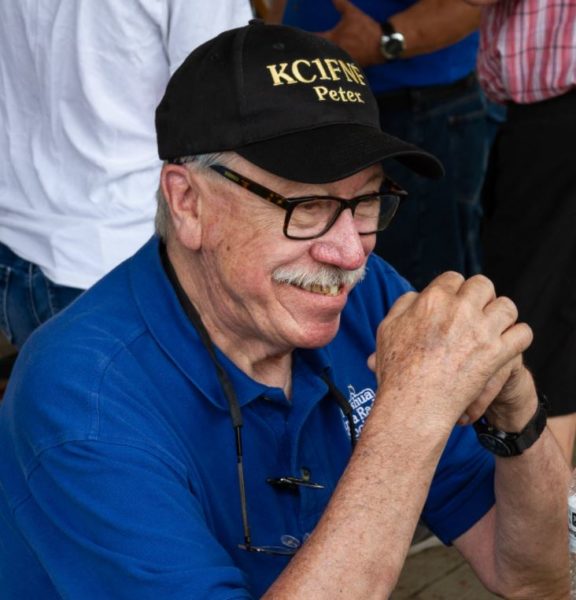
I joined Nashua Area Radio Society in March of 2019 with a very warm welcome. At the time I had been a Ham for about 3 years with a General License. In April of 2019, I studied for the Amateur Extra license and attended the 3-day Extra Class training at Fred and Anita’s home, where there were several instructors teaching with a broad knowledge of Amateur Radio topics. I really enjoyed the class. I passed and received my Amateur license. I am very honored to have been nominated and elected to the position as Secretary of the Nashua Area Radio Society.
Fred Kemmerer (AB1OC) – Programs Chair
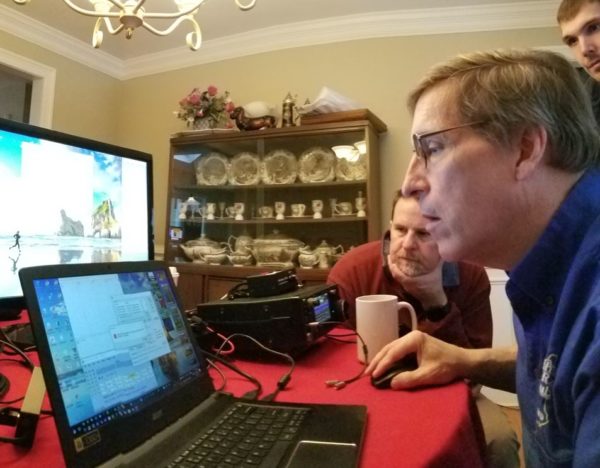
2021 was a busy year for the Nashua Area Radio Society. Our licensing and new ham development programs were all online. We held a total of 7 license classes and two Ham Bootcamp sessions. We held our first post-COVID in-person Field Day in June. The turnout was great, and it was nice for folks to be together in person doing Amateur Radio again. NARS also returned to HamXposition with our Ham Radio Display in 2021. We also had the opportunity to teach classes about Amateur Radio in a local middle school and I was involved in helping five schools to make contacts with astronauts on the International Space Station via Amateur Radio. NARS partnered with Bishop-Guertin HS to help them make their contact. I also helped a school in Maine prepare for their contact and I served as the ARISS ground station for contacts with groups in Arizona, Canada, and Ohio. ARISS activity is continuing into 2022 with work to help Sussex County Charter school in New Jersey to make their contact early in February 2022 and I will be serving as the ground station for a Scout group in Australia who will make their contact on Tuesday, January 4th. The second half of 2021 began a new chapter in my Amateur Radio experience with a successful campaign to become the ARRL New England Division Director. I am looking forward to this new role which begins today. I will also begin serving as NARS program chairperson in 2022 and I am looking forward to this new role as well.
It would be impossible for NARS to accomplish all these things and more without the dedication of many member volunteers. Giving back to Amateur Radio the way we do at NARS is a model for the entire Amateur Radio community. I want to personally thank all of the folks at NARS who contributed to our many projects – Licensing, Bootcamp, Field Day, ARISS, Classroom work, HamXpositon, and other projects. You all make NARS what it is – one of the best Amateur Radio Clubs on the planet. Happy New Year as we look forward to 2022.
Anita Kemmerer (AB1QB) – Membership Chair
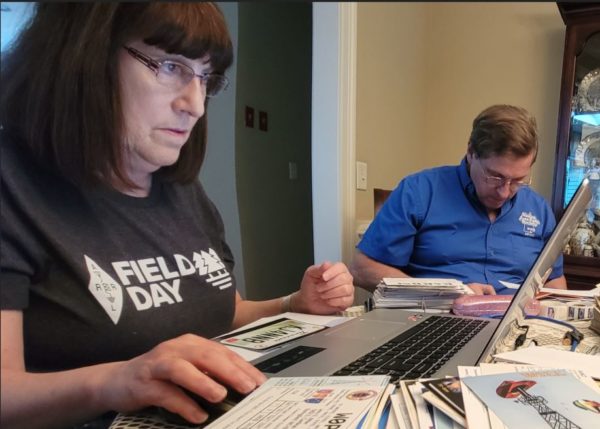
As membership chairperson for the Nashua Area Radio Society and coordinator of our licensing and new ham development programs, I would like to thank all of our volunteer instructors, volunteer examiners, and Bootcamp instructors for helping us in 2021 to continue our mission of bringing new hams into amateur radio and helping them to get on the air. Through our online classes we helped 72 people get a new license or upgrade and helped over 600 hams or prospective hams get on the air via our spring and fall Ham Bootcamp.
I would also like to welcome all the new members who have joined us this year. In 2021, we had 79 new regular members and 101 new internet subscribers join the Nashua Area Radio Society. I would like to thank all our volunteers for making the Nashua Area Radio Society one of the best clubs in New England and I am looking forward to an even better 2022!
Jim Lajoie (K1BRM) Activities Chair
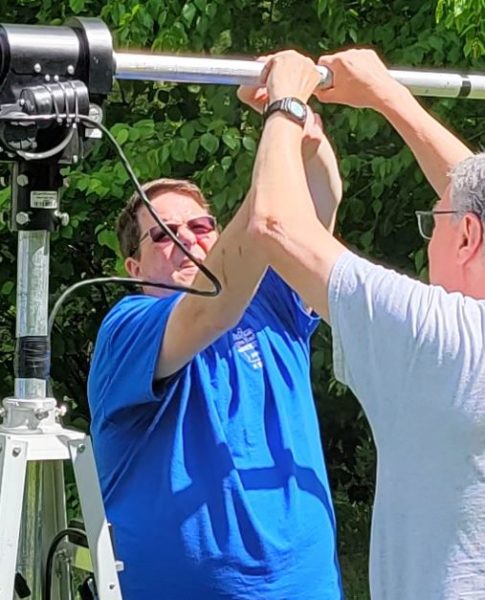
Jim was elected to the role of Activities Chair in the 2019 club elections. He has been busy arranging activities such as SOTAs and POTAs along with monthly club breakfasts. The weekly repeater net and HF chat nets are also among the activities Jim helps to manage. We look forward to more activities as conditions allow.
Jon, AC1EV

